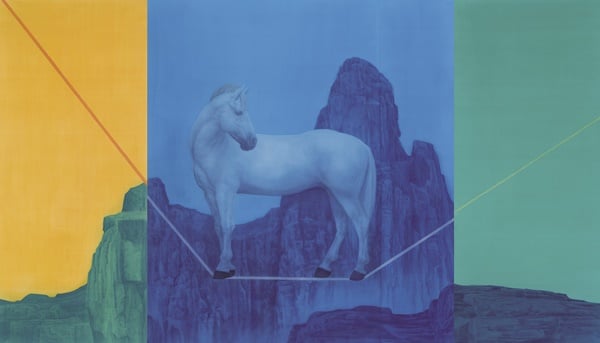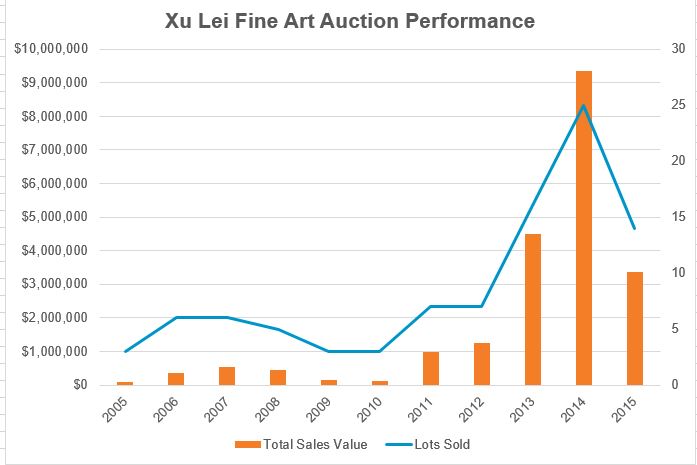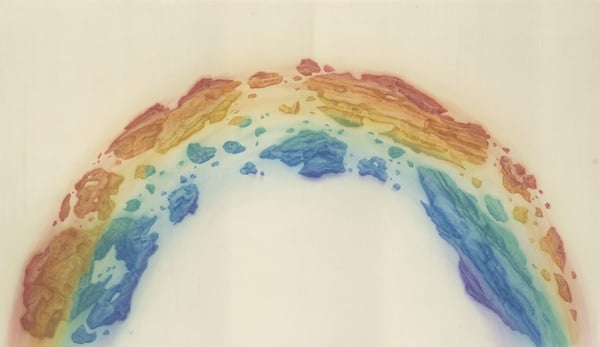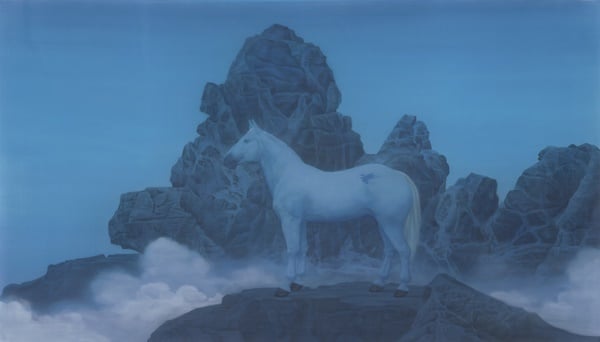Art & Exhibitions
Will Chinese Art Star Xu Lei Find a US Audience?
His first major US solo show already has strong sales.

His first major US solo show already has strong sales.

Eileen Kinsella

Artist Xu Lei is best known for his blue-hued paintings on silk that depict surreal scenes aimed at portraying China balancing tradition with an inventive spirit. Until now, his popularity has been concentrated mostly in China and, to a lesser extent, in Europe.
He is far less familiar to US collectors, but now Marlborough Gallery is aiming to change that with its recently opened New York show “Xu Lei: New Work,” that includes 12 Chinese ink and mineral on silk works, and one sculpture. This is the artist’s first solo exhibition with Marlborough and his first major solo exhibition of new work in the United States since 2010.
Since the opening on May 12, seven of the paintings sold in the first week alone, and at least one New York-based collector bought one, confirms gallery director Doug McClemont. In addition, the single sculpture in the show sold on opening night.

Source: artnet Analytics
To date, more than 100 of the artist’s works have already appeared at auction, mostly from Chinese auction houses. In 2014, the number of works offered peaked at 25, which brought a total of $9.4 million, though that number has dropped in recent years, perhaps owing to scarcity. In 2015, a total of 14 works were offered at auction, bringing in $3.4 million, according to artnet Analytics.
This year, just two works have been offered at auction.
The artist’s $3 million record was set at China Guardian in 2014, for a four-part rainbow rock painting, Rainbow Stone (2012-2013). Last April, another Chinese auction house, Poly, sold Descent of the Moon (2009), an ink and color on paper work, for $761,000.

Xu Lei, Rainbow Stone (2015). © Xu Lei, courtesy Marlborough Gallery, New York
“Within each painting, there is sort of a beginning and an end,” McClemont told artnet News, noting that “The rainbow being the most ephemeral thing in the universe [is] then made solid and permanent…”
Xu trained in classic Chinese painting techniques, using traditional tools including silk, paper, ink and mineral pigments. He graduated from the Fine Arts Department of Nanjing Arts Institute in 1984.
Though he was active in the avant-garde “85 New Wave,” moment, in the 1990s he chose to return to traditional techniques such as the “elegant, precise strokes,of gongbi,” as Lily Wei points out in the catalogue essay “Dream Realism,” for the current show. “It is a style of brushwork that suits realistic formations, originating in the Han dynasty and attained its highest level of refinement during the Tang and Song eras.”

Xu Lei, Augmented Dream (2015). © Xu Lei, courtesy Marlborough Gallery, New York
Another aspect of the artist’s wild popularity in China is his technique and unusual materials. “It’s all on silk and he uses a mineral pigment—literally rock and plant forms with glue ground into a paste with the pigment, and the silk accepts the mark. It is the most unforgiving surface with this rocky, glue material that he’s painting with, and there isn’t a mark out of place,” said McClemont.
Xu’s work has been featured in group exhibitions all over the world. He has had solo shows at Jiangsu Art Museum in Nanjing (1994), the Library of Congress Asian Division in Washington, D.C. (2008), Asia House in London (2011), the Today Art Museum in Beijing (2013), and the National Museum of China in Beijing (2016).
His work is in the collections of institutions including the Shanghai Art Museum, the Jiangsu Art Museum, the Today Art Museum, and the Nanjing Arts Institute.
The show runs through June 18 at Marlborough’s 57th Street space.